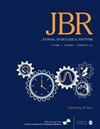From Bench to Bedside and Back Again: Translating Circadian Science to Medicine.
IF 2.9
3区 生物学
Q2 BIOLOGY
引用次数: 0
Abstract
125 Clinicians, scientists, industry, occupational health and public health professionals, and patients are excited about the promising health and safety implications of circadian medicine. The award of the 2017 Nobel Prize in Physiology or Medicine to three scientists (Hall, Rosbash, and Young) for their work in elucidating the mechanisms of circadian rhythmicity introduced many people to the field. Now we and others are frequently asked when the results of basic research will be available for diagnosis, monitoring, and/or treatment of individual patients. Overwhelming evidence indicates that the circadian clock is essential for health and its disruption causes pathologies (Figure 1). A triad of circadian medicine approaches was recently proposed (Kramer et al., 2022): (a) detecting the clock (e.g. new diagnostic tools), (b) targeting the clock (e.g. improving or resynchronizing disrupted rhythms), and (c) exploiting the clock (e.g. using time-of-day adapted treatment regimens). Examples of each of these approaches already in use include the dim light melatonin onset (DLMO) for detecting circadian phase, light treatment for circadian and other disorders, and time-of-day recommendations for statin-type medications. These and other encouraging past and recent successes in circadian medicine suggest that greater and more comprehensive translation of basic chronobiological findings into medical practice is possible. We therefore recognize a need to provide for the circadian rhythms research community an outline of the steps, processes and time frame required to translate basic science findings to evidence based clinical care and/or public health and safety recommendations (Figure 2): how does a discovery become an approved approach, and then a guideline, a clinical care recommendation, and finally a policy? Each step along the way is performed with specific questions, protocols, variables, and analyses within a specific population, and each step should consider whether the target is etiology, health/disease balance, and/or recovery (Roenneberg et al., 2022). Each step applies to diagnosis/monitoring tests, interventions (e.g. drug, device), and/or analysis methods [biochemical or algorithmic (e.g. to calculate circadian phase or the optimal timing and/ or dose of an intervention)]. Most of the following steps apply to interventions, but the underlying principles are the same. Before efficacy and effectiveness conclusions/clinical guidelines can be drawn, data from multiple experiments and studies will have to be compiled in a stepwise approach.从实验室到床边再回来:将昼夜节律科学转化为医学。
本文章由计算机程序翻译,如有差异,请以英文原文为准。
求助全文
约1分钟内获得全文
求助全文
来源期刊
CiteScore
6.10
自引率
8.60%
发文量
48
审稿时长
>12 weeks
期刊介绍:
Journal of Biological Rhythms is the official journal of the Society for Research on Biological Rhythms and offers peer-reviewed original research in all aspects of biological rhythms, using genetic, biochemical, physiological, behavioral, epidemiological & modeling approaches, as well as clinical trials. Emphasis is on circadian and seasonal rhythms, but timely reviews and research on other periodicities are also considered. The journal is a member of the Committee on Publication Ethics (COPE).

 求助内容:
求助内容: 应助结果提醒方式:
应助结果提醒方式:


